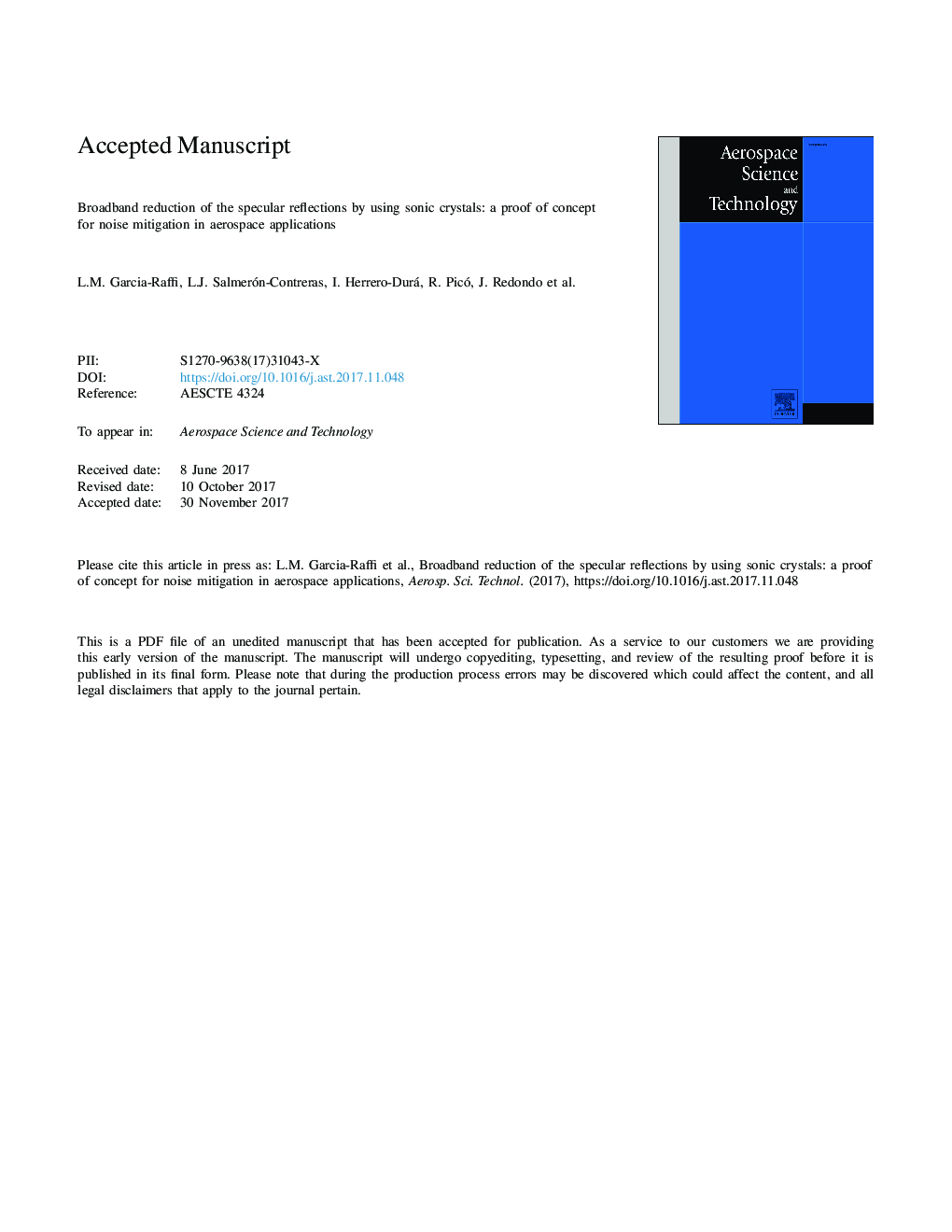| Article ID | Journal | Published Year | Pages | File Type |
|---|---|---|---|---|
| 8058170 | Aerospace Science and Technology | 2018 | 12 Pages |
Abstract
The broadband reduction of the specular reflections by sonic crystals (SCs) is theoretically and experimentally reported in this work. The analysed system consists of a sound source radiating a SC made of acoustically rigid scatterers embedded in water partially covering an open cavity. By comparison with a reference flat reflector, we observe that reflected waves spread in space as a consequence of the spatially modulated properties of the SC. Moreover, due to the different working frequency ranges of the SC a significant noise reduction is produced in a broadband region. Therefore, due to the spreading of the reflected waves, the system produces a broadband noise reduction in the area of the source. In particular, the noise reduction is close to 2 dB for the two octaves emitted by our source, which represents a decrease of 37% of the acoustic energy. The results shown in this work constitute a proof of concept for the use of SCs as broadband-noise reduction systems at the launch pad. An approach to the geometry of the Vega launch vehicle the European Space Agency is proposed and the limitations of the study are discussed.
Related Topics
Physical Sciences and Engineering
Engineering
Aerospace Engineering
Authors
L.M. Garcia-Raffi, L.J. Salmerón-Contreras, I. Herrero-Durá, R. Picó, J. Redondo, V.J. Sánchez-Morcillo, K. Staliunas, N.J.E. Adkins, A. Cebrecos, N. Jiménez, V. Romero-GarcÃa,
